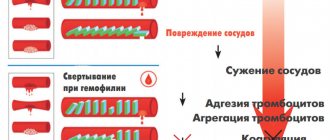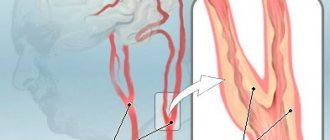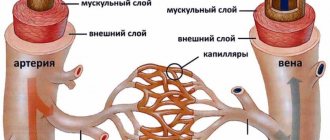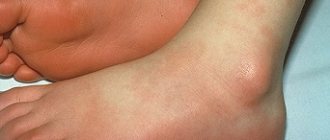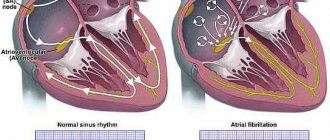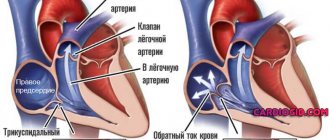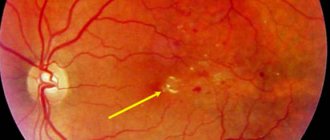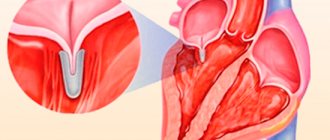Residual cerebral encephalopathy (RE) is a pathological condition caused by organic changes in cerebral structures against the background of ischemia, infections, injuries and other lesions. The severity ranges from minor impairments to severe neurological deficits that cause disability. The most common symptoms are headaches, paresis, autonomic dysfunction, and loss of consciousness. Intellectual and emotional disorders are possible.
To schedule a consultation, contact our operator by phone 8(969)060-93-93.
Causes
The etiology of EC in children and adults varies, but the underlying cause is always damage to brain tissue. In patients of younger age groups, the disease is most often associated with insufficient blood supply to the brain during gestation, during childbirth and in the first days after birth. The congenital form is provoked by factors such as intrauterine hypoxia, complications during childbirth, birth injuries, and the use of obstetric aids. Heredity, the presence of bad habits in the mother and the age of the pregnant woman play a certain role.
The list of factors that provoke RE in adult patients includes the following conditions:
- chemical dependencies: alcoholism, drug addiction;
- poisoning: salts of heavy metals, insecticides, other toxic substances, often as part of industrial hazards;
- radiation exposure;
- traumatic brain injuries;
- ischemic and hemorrhagic strokes, vascular thrombosis, hypertensive crises;
- cerebral atherosclerosis;
- infectious and inflammatory diseases of the membranes and tissues of the brain: meningitis, arachnoiditis, encephalitis;
- abnormalities in the development of brain structures and cerebral vessels;
- conditions after neurosurgical operations.
Determining the cause of the pathology is associated with some difficulties, since symptoms often appear many years after the adverse effect. In old age, the consequences of injury or infection may be superimposed by hypertension and atherosclerosis.
Consequences of encephalopathy in children
At the moment, experts have identified several reasons that caused such changes in the structures of the brain of children. For example, it is known that perinatal encephalopathy can be inherited from parents to children. That is, if the family has already had cases of the development of such pathologies, then the risk of its occurrence in their children increases significantly.
The consequences of such destruction of structures are difficult to predict in advance, due to the fact that the study of cases of encephalopathy development is often difficult in infancy, since its manifestations are less pronounced than in adulthood.
Since active brain development occurs in the last days of pregnancy and the first months of a child’s life, the most dangerous consequence of encephalopathy at this age is considered to be a disruption in the supply of brain tissue with nutrients, which initially results in a metabolic failure that leads to damage to nerve cells. Unfortunately, this often leads to the death of neurons and the destruction of their connections. As a result, such pathological processes lead to a stop in the development of the brain and its parts, which affects the functioning of the entire organism.
Further, the outflow, secretion and circulation of cerebrospinal fluid in the brain tissues is disrupted, which leads to an increase in the size of the skull and hydrocephalus, which leads to hydroencephalopathy (a lesion caused by increased pressure of the cerebrospinal fluid) of the child’s brain.
However, do not despair; timely therapy can slow down the course of the disease. Treatment usually boils down to reducing swelling and improving cerebral circulation.
In any case, the consequences will depend on the degree of damage to the brain structures and the reasons that caused such changes.
Symptoms
Manifestations are characterized by significant variability, their nature and severity depend on the prevalence and severity of damage to nerve cells, the compensatory capabilities of the brain and the age of the patient. In infants, signs of encephalopathy of residual origin are increased or decreased muscle tone, unmotivated crying, lack of response to stimuli, or, conversely, frequent episodes of restlessness.
As the child grows, mental retardation, delayed speech development and motor skills are added to the listed symptoms. The presence of such manifestations with sufficient probability indicates the prospect of persistence of residual phenomena throughout life. It should be taken into account that the clinical picture does not always correlate with the severity of brain dysfunction; some signs disappear over time or are eliminated with the help of therapeutic measures.
Subsequently, residual phenomena such as emotional disorders and delayed psychomotor development come to the fore. Children sleep poorly and are characterized by increased tearfulness and irritability. Long-term consequences of perinatal residual organic encephalopathy may include insufficient control over one’s behavior, attacks of aggression, fainting, nausea, vomiting, headache, autonomic dysfunction, poor memory, and decreased learning ability.
Manifestations of the disease can be combined into several neurological syndromes:
- Intellectual-mnestic. Occurs with cognitive impairment, attention and memory disorders.
- Astheno-neurotic. Weakness, increased fatigue, emotional instability, depressive and hypochondriacal tendencies are noted.
- Vestibular-coordinating. Accompanied by dizziness and poor coordination of movements.
- Cephalgic. There are severe headaches.
In adolescent and adult patients, residual encephalopathy may manifest itself as follows:
- frequent migraines that are difficult to relieve with traditional methods;
- emotional lability: apathy, hypochondria, sudden mood swings, causeless crying, increased anxiety, attacks of aggression;
- intracranial hypertension, manifested by headaches, nausea and vomiting;
- autonomic dysfunction: instability of blood pressure, increased or decreased heart rate, sweating;
- insomnia: difficulty falling asleep, frequent awakenings, daytime sleepiness;
- in severe cases - convulsions.
Clinical manifestations of encephalopathy on a residual organic background range from minor to pronounced. In most cases, especially with congenital anomalies, traumatic or inflammatory genesis of the pathology, signs of increased intracranial pressure come to the fore.
A common symptom is persistent cephalgia, peaking in the morning. Characteristic symptoms include nausea and vomiting at the height of a painful attack, weakness, fatigue, blurred vision or spots before the eyes, and difficulty performing intellectual work. Half of the patients have vestibular disorders. Sometimes a decrease in the accuracy of small movements is detected.
Total information
Schizophrenia is a polymorphic endogenous disease that affects the human mental apparatus. Polymorphism suggests that it occurs in different forms. The reason for its origin is the internal state of the psyche, so we are talking about an endogenous nature. As for the direct impact on a person, schizophrenia affects the brain, or more precisely, thinking and emotional reactions.
This psychopathology is detected in approximately 1% of people. The peak incidence occurs at 20-28 years in men, and at 26-32 years in women. However, schizophrenia is also diagnosed in children, as well as in the elderly. Moreover, it is often combined with anxiety disorders, depression, alcoholism and drug addiction, so it is not always possible to identify the disease at an early stage.
Many people believe that schizophrenia is a split personality. Others believe that it is always accompanied by hallucinations. In fact, “multiple personality disorder” is too simple a word for such a complex disease. In schizophrenic disorders, there is a disintegration of personal qualities and a person’s loss of contact with reality.
If we talk about hallucinations, they do not occur with every type of pathology. Moreover, the presence of this symptom may not indicate a schizophrenia spectrum disorder. Residual schizophrenia refers to those forms in which hallucinations are extremely rare.
Diagnostics
The diagnosis is made by a neurologist. It is often associated with significant difficulties due to the significant period between the causative disease and the time of manifestation of residual encephalopathy. A thorough collection of anamnesis and complaints, a comprehensive laboratory and instrumental examination are necessary. The list of hardware techniques includes EEG, MRI and CT of the brain. According to indications, a spinal puncture is performed, and genetic tests are performed to exclude hereditary provoking pathologies.
Cost of services
| CONSULTATIONS OF SPECIALISTS | |
| Initial consultation with a psychiatrist (60 min.) | 6,000 rub. |
| Repeated consultation | 5,000 rub. |
| Consultation with a psychiatrist-narcologist (60 min.) | 5,000 rub. |
| Consultation with a psychologist | 3,500 rub. |
| Consultation with Gromova E.V. (50 minutes) | 12,000 rub. |
| PSYCHOTHERAPY | |
| Psychotherapy (session) | 7,000 rub. |
| Psychotherapy (5 sessions) | 30,000 rub. |
| Psychotherapy (10 sessions) | 60,000 rub. |
| Group psychotherapy (3-7 people) | 3,500 rub. |
| Psychotherapy session with E.V. Gromova (50 minutes) | 12,000 rub. |
This list does not contain all prices for services provided by our clinic. The full price list can be found on the “Prices” , or by calling: 8(969)060-93-93. Initial consultation is FREE!
Treatment
Therapeutic measures must be comprehensive. Drug therapy is complemented by lifestyle correction. It is necessary to normalize the daily routine, alternating work and rest, sufficient time in the fresh air, and moderate physical activity. Physiotherapy and sanatorium-resort treatment are recommended, and sometimes psychotherapy is indicated. Medicines are prescribed taking into account the existing symptoms:
- cephalalgia: analgesics and NSAIDs;
- migraine: medications from the triptan group;
- dizziness: betaserc;
- insomnia, psychoemotional disorders: adaptogens, sleeping pills, antidepressants;
- intracranial hypertension: diuretics.
How to treat RE is determined individually. Patients are prescribed nootropics and nerometabolites. Children, along with symptomatic therapy, are given classes with a psychologist and a defectologist. The most important role is played by the participation of parents who support the baby and regularly work with him.
The forecast for the future is quite favorable. In most cases, with adequate complex therapy, it is possible to achieve the disappearance or significant reduction of symptoms. Patients lead normal lives: they study various professions, work, and build families. In severe cases, residual effects may persist, mainly headaches and autonomic disorders.
To make an appointment, just call tel. 8(969)060-93-93.
Consequences
A late diagnosis and lack of adequate treatment can lead to the development of quite serious complications. These include hydrocephalic syndrome, vegetative-vascular dystonia, and residual brain dysfunction. The most severe consequences of residual encephalopathy are cerebral palsy and epilepsy.
Residual encephalopathy
is deservedly considered one of the most complex and dangerous diseases, because it often becomes the cause of quite serious complications. To avoid negative health consequences, it is necessary to consult a doctor at the first signs of this disease. Only a competent specialist will be able to make the correct diagnosis based on the existing symptoms and select the appropriate therapy. Thanks to an integrated approach to the treatment of residual encephalopathy, the chances of a full recovery increase many times over. Therefore, do not put off visiting a doctor under any circumstances; remember that your health is in your hands.
